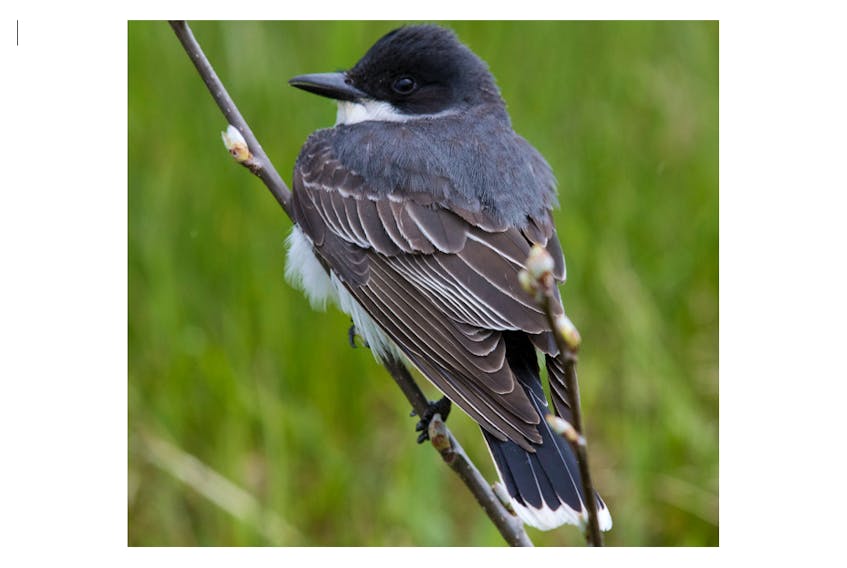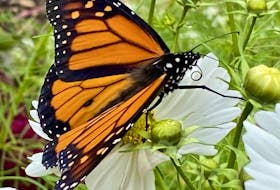Is it possible to see 100 species of birds on the Avalon Peninsula? I do not mean in a lifetime or one year, but I am talking about 100 species of bird in one day! One of the games birders everywhere play is trying to figure out how many species can be seen in a single day in their area.
A good cause is often what it takes to get the wheels in motion to make a Big Day happen as it is often called. In this way the family is more likely to agree with you taking 24 hours off from all duties and commitments. For the last three years Catherine Barrett and Alvan Buckley have been teaming up in the name of a conservation project to put in a serious effort to see as many species as possible on the Avalon Peninsula within a 24-hour period. Note I said a 24-hour period. This charity bends the Big Day rules a little by allowing the effort to take place over any 24 consecutive hour period.
It was The Great Canadian Birdathon. This is an annual spring event held by Bird Studies Canada to raise money for bird conservation in Canada. Their team is called the Twillicks. In 2017 it rained on the Big Day but the Twillicks had luck on their side and ended up with an impressive 95 species. This was proof enough that seeing 100 species in a day on the Avalon Peninsula was possible. Donations to the team can be a lump sum or a certain amount of money per species seen. This provides added incentive to find more birds.
This year the Big Day ran from Saturday 6 p.m. to Sunday 6 p.m. The first order of business was to run around to all the ponds in the St. John’s area to see the ducks. Among the common city fowl were a blue-winged teal, northern shoveler, tufted duck, American wigeon and wood duck, all rare in June. The grey catbird singing on Powers Road in the Goulds was located. There were some swallows on Quidi Vidi Lake to tick. After night fall a bittern was heard displaying at Third Pond in the Goulds and the sora called at Lundrigan’s Marsh. They had good foundation to the list as they retired at 11 p.m.
After a short sleep and hearty breakfast they were driving down the Southern Shore at 4 a.m. Birds start singing early in the summer. The La Manche area is a key woodland area. Getting there early was vital. Two singing Tennessee warblers boosted the warbler list to 11 species. The usual blue-headed vireo was not singing but the first gray-cheeked thrush of the season made up for that. A ruffed grouse drummed, a grey jay visited and a merlin flew over. These were all birds easy to miss when you are in a hurry. They left La Manche at 7 a.m. with 66 species.
Driving through Ferryland they spotted a robin-size bird sitting in a front yard with a white rim on the tail. It was a rare eastern kingbird, a bonus bird. Birding around Renews and Bear Cove Point Road they added the expected shoreline species and seabirds. They left Bear Cove 82 species and it was only 10 a.m. The optimism was high.
Before Cape Race there was a visit to Biscay Bay where all three species of a scoter and a small flock of lingering long-tailed ducks were present. Any or all of these species could easily be absent on a day in June. A late Iceland gull showed itself in Portugal Cove South as the passed through on the way to Cape Race. When they came back out from Cape Race the list was at 97 species and there were two hours left before the 6 p.m. deadline.
They spent time in Trepassey looking for the rare Franklin`s gull that had been present for a week but had not been seen since the day before. Time was slipping away. What had they missed during the day that they could still find? It was desperate times as they tried listening in vain for a mourning warbler. Or hoped to see a short-eared owl hunting over the barrens or find that willet that should have been present at Renews. Reluctantly they ended the birdathon in Renews when the time clock ran out and still standing at 97 species. They had run out of luck just short of that magical score of 100. However, it took hard work and strategy to reach the total they did achieve. It was a royal effort and a species total to be proud of. On top of that they raised $1065.00 and counting for bird conservation of which 25 per cent goes to support Nature Newfoundland and Labrador. There is always next year for that elusive 100 species of bird in a day. You can still contribute to this year’s birdathon at this web site https://www.canadahelps.org/en/charities/bird-studies-canada/p2p/birdathon/team/the-twillicks/
Bruce Mactavish is an environmental consultant and avid birdwatcher. He can be reached at [email protected]









